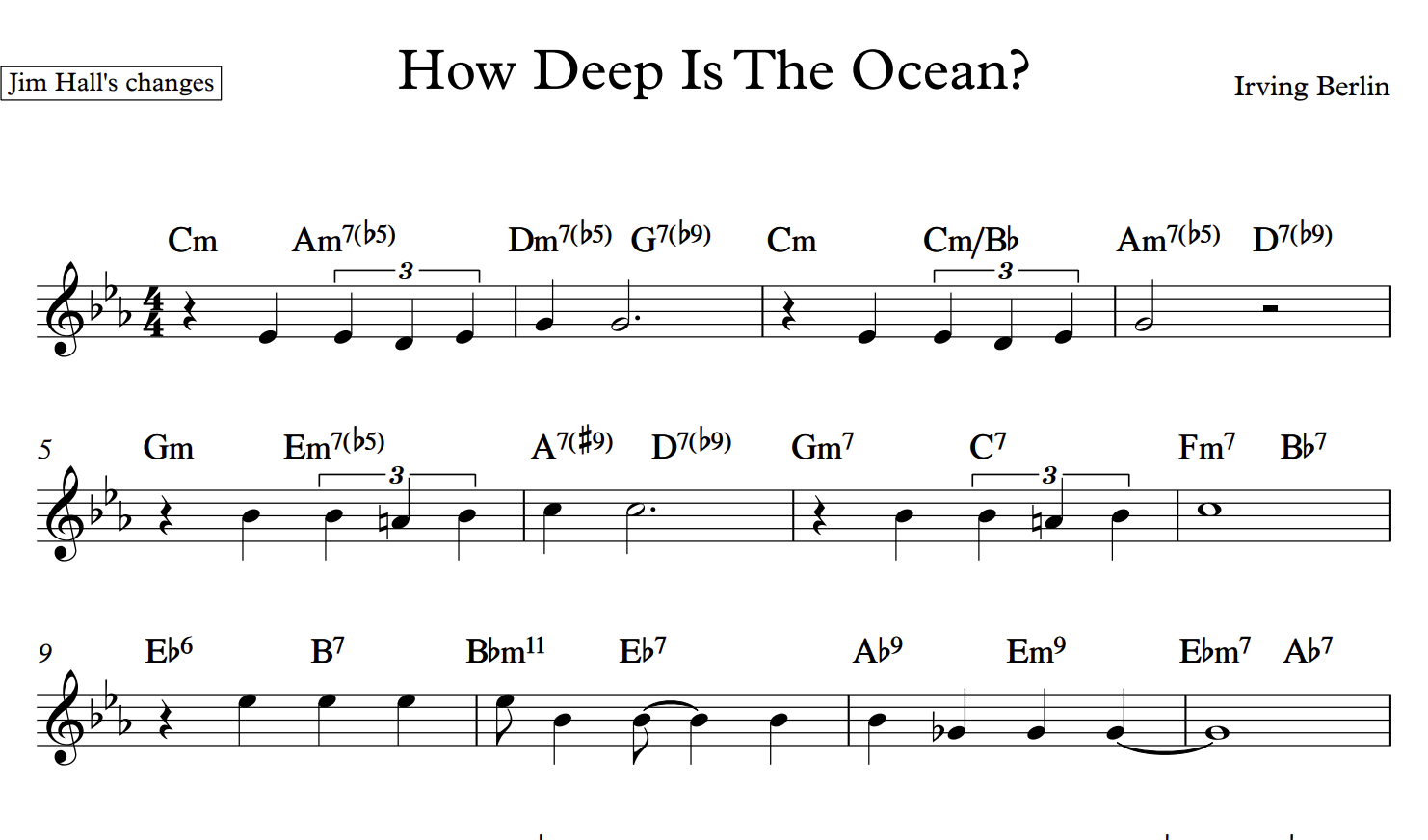“How Deep is the Ocean” is a classic jazz standard that has been covered by countless musicians over the years. One of the keys to playing this tune effectively is understanding how to use guide tone lines to create a strong harmonic foundation.
Guide tone lines are a technique used by jazz musicians to navigate the changes of a tune. The basic idea is to identify the key harmonic tones that define the chords in a progression and use them as a guide for your improvisation. In the case of “How Deep is the Ocean,” we can use guide tone lines to help us navigate the chord changes in the A section.
The A section of “How Deep is the Ocean” is a series of ii-V-I progressions in the key of G major. The chords are as follows:
| Em7 | A7 | Dmaj7 | % |
| Em7 | A7 | Dmaj7 | % |
| Bm7 | E7 | Amaj7 | % |
| B7 | Em7 | A7 | % |
To create a guide tone line for this progression, we need to identify the key harmonic tones for each chord. These are the third and seventh of each chord, which are the most important tones in defining the chord quality. Here’s a breakdown of the guide tones for each chord:
| Chord | Guide Tones |
|---|---|
| Em7 | G B |
| A7 | C# G |
| Dmaj7 | F# C# |
| Bm7 | D F# |
| E7 | G# D |
| Amaj7 | C# G# |
| B7 | D# A |
To create a guide tone line, we simply connect the guide tones for each chord in a smooth, flowing line. Here’s an example of a guide tone line for the A section of “How Deep is the Ocean”:
| G | G | F# | F# |
| E | E | D# | D# |
| B | Bb | A | A |
| Ab/G | G | F# | F# |
Once we have a guide tone line, we can use it as a basis for our improvisation. We can start by simply playing the guide tone line as written, adding embellishments and variations as we become more comfortable with the progression. We can also use the guide tone line as a springboard for developing our own ideas and phrases.
One of the benefits of using guide tone lines is that they help us to create a strong harmonic foundation for our improvisation. By focusing on the key harmonic tones, we can create a sense of coherence and unity in our solos, even as we move through different chords and keys. This can help us to create more compelling, engaging solos that capture the essence of the tune.
Of course, this is just one approach to playing “How Deep is the Ocean.” There are many other ways to approach the tune, and different musicians will have their own unique approaches and perspectives. However, by using guide tone lines as a starting point, we can build a strong foundation for our improvisation and develop our own unique voice as jazz guitarists.



Wow those aren’t the changes ii v7 I in Dmaj